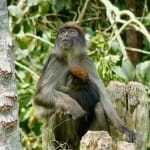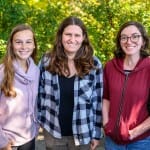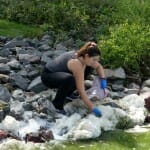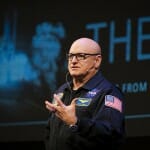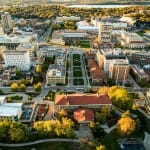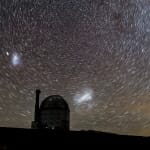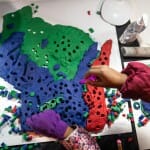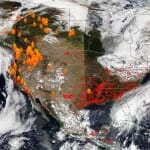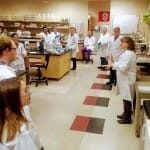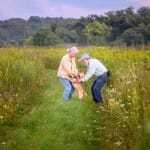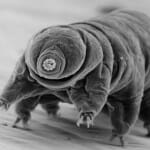Category Science & Technology
Grad students work with climatologist on tool to alert communities to dangerous heat levels
In practice, the new warning system could help policymakers make decisions for how their population can stay healthy during extreme heat.
American Physical Society names four UW faculty fellows
Four University of Wisconsin–Madison professors have been elected fellows of the American Physical Society, recognizing advances in physics through original research and publication, significant and innovative applications of physics, and leadership, service and contributions to the teaching of physics.
Understanding freshwater foam may help in fight against PFAS “forever chemicals”
Research in the School of Engineering will advance our understanding of how PFAS chemicals behave in diverse aquatic conditions.
Improved understanding of early spinal cord development paves the way for new treatments
Researchers at the University of Wisconsin–Madison are developing the means to turn stem cells into a wide range of specific types of spinal cord neurons and cells in the hindbrain — the critical nexus between the spinal cord and the brain — paving the way for improved prevention and treatment of spinal cord disease.
New interactive mural invites exploration and engagement with science
A multilayered mural painted in bold colors now hangs in the atrium of the Discovery Building, depicting the many facets of STEM research and inspiring new generations to engage in science. Painted QR codes make the mural interactive, drawing the viewer into the stories of renowned and lesser known Wisconsin scientists whose contributions have shaped society.
NASA Astronaut Scott Kelly speaks at UW on his Year in Space
Retired NASA astronaut Scott Kelly spoke to a nearly full house at Memorial Union on Oct. 4 about his year in space, one day reaching the red planet and the importance of endurance through adversity.
Decades of work at UW–Madison underpin discovery of corona protecting Milky Way’s neighboring galaxies
Astronomers at UW–Madison used light from quasars across 28 galaxies to illuminate a corona of warm gases mediating a trail of gaseous debris left by the Large and Small Magellanic Clouds, two dwarf galaxies orbiting the Milky Way.
Unleash your curiosity at the 12th annual Wisconsin Science Festival
The 12th annual Wisconsin Science Festival includes more than 300 events across the state from Oct. 10-16. Most of the festival’s 300 events are free, including hands-on activities, talks with scientists and authors, films, performances, nature hikes, take-home science kits and much more.
Radiolab’s Latif Nasser coming to Madison as fall Science Journalist in Residence
Journalist, science historian and Radiolab co-host Latif Nasser will visit UW classrooms and speak about compelling science storytelling on as part of his tenure as UW–Madison Science Journalist in Residence.
One-minute data from UW helps NASA detect wildfires faster
Researchers at UW–Madison's Space Science and Engineering Center are delivering up-to-the minute satellite data to NASA to assist efforts tracking and monitoring wildfires.
20 years after founding, MS in Biotech drives Wisconsin’s biosciences economy
Twenty years on, UW–Madison's MS in Biotechnology continues to prepare students to take leadership roles in the burgeoning biotech economy. About two-thirds of graduates remain in Wisconsin.
One hundred acres of beauty
A visual tour of 100 acres of land being restored and conserved by UW–Madison's Susan and Steve Carpenter.
Lightning strikes shape tropical forests
New UW–Madison research helps establish lightning as an environmental driver that may dictate what trees will make up tropical forests in the future.
New institute will probe biology in the absence of water
The microscopic, hardy tardigrade. Image courtesy of National Park Service They’re microscopic, they have eight legs and they basically resemble tiny, wrinkly bears.

